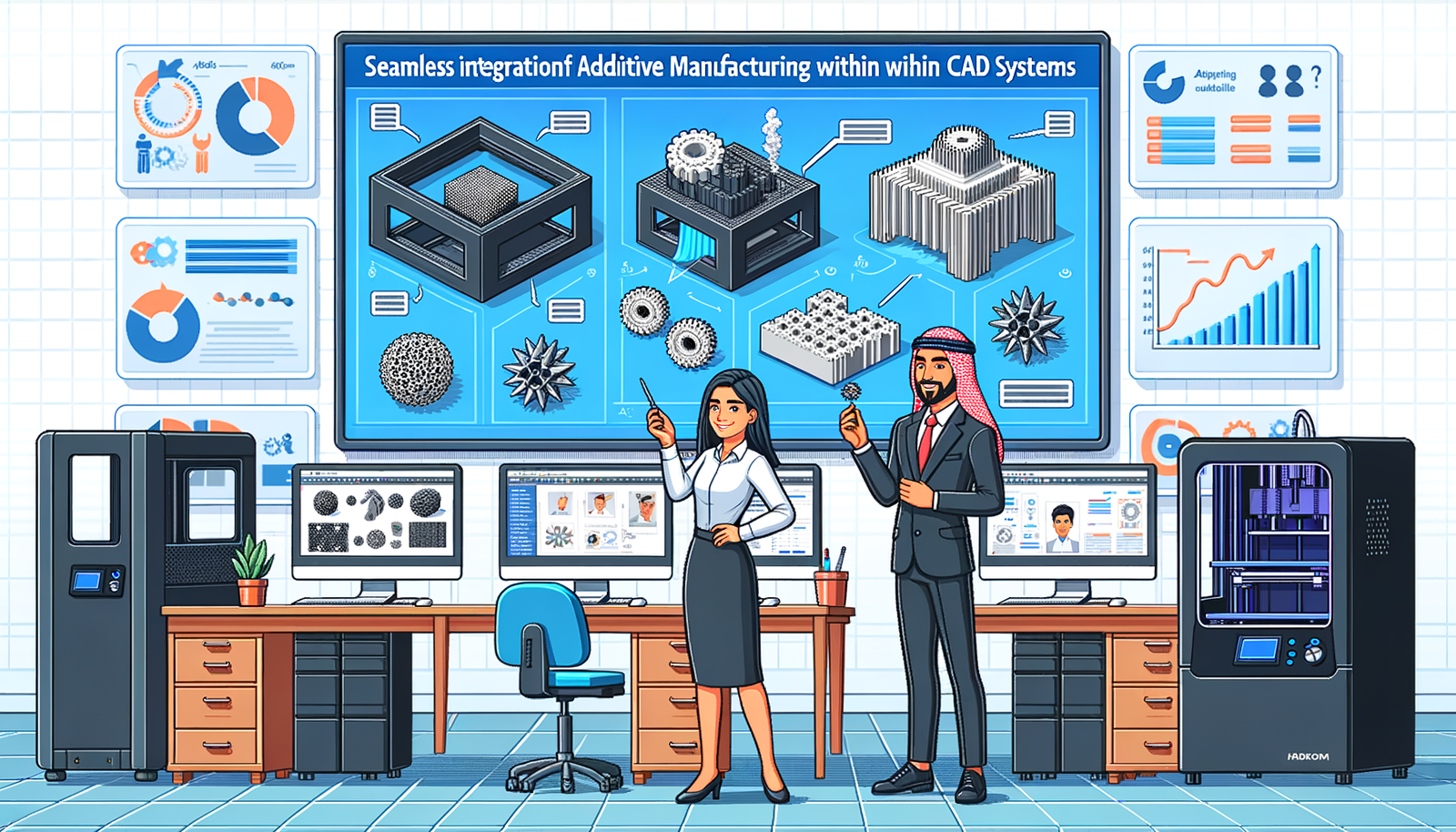Your Cart is Empty
Customer Testimonials
-
"Great customer service. The folks at Novedge were super helpful in navigating a somewhat complicated order including software upgrades and serial numbers in various stages of inactivity. They were friendly and helpful throughout the process.."
Ruben Ruckmark
"Quick & very helpful. We have been using Novedge for years and are very happy with their quick service when we need to make a purchase and excellent support resolving any issues."
Will Woodson
"Scott is the best. He reminds me about subscriptions dates, guides me in the correct direction for updates. He always responds promptly to me. He is literally the reason I continue to work with Novedge and will do so in the future."
Edward Mchugh
"Calvin Lok is “the man”. After my purchase of Sketchup 2021, he called me and provided step-by-step instructions to ease me through difficulties I was having with the setup of my new software."
Mike Borzage
Harnessing the Power of Cloud Rendering: Transforming Design Workflows with Speed, Flexibility, and Innovation
October 21, 2024 5 min read


Introduction to Cloud Rendering
In the realm of digital design and visualization, rendering stands as a crucial process that transforms abstract models into lifelike images and animations. Traditional rendering methods, while foundational, have long been plagued by significant limitations. Time-consuming rendering processes have often hindered project timelines, forcing designers to make a trade-off between quality and efficiency. The dependence on high-end hardware not only escalates hardware dependencies and costs but also limits accessibility for smaller firms or individual practitioners. The necessity of investing in powerful local machines means that only those with substantial budgets can afford to produce high-quality visualizations promptly. Furthermore, the continuous advancement in rendering software requires regular hardware upgrades, adding to the financial burden. These constraints have created a bottleneck in the creative process, where the technical limitations overshadow the artistic and functional aspects of design.
As the demand for more intricate and high-fidelity visualizations grows across various industries—including architecture, gaming, and film—the need for a more efficient rendering solution becomes evident. Enter cloud rendering, a revolutionary approach that leverages remote servers to perform rendering tasks. By offloading the computational workload to the cloud, designers can bypass the limitations of their local hardware. Cloud rendering allows for the utilization of powerful server farms equipped with top-tier processors and graphics units, providing a level of performance unattainable for many through traditional means. This shift not only democratizes access to high-quality rendering capabilities but also aligns with the modern trend towards flexible, scalable technological solutions. The burgeoning interest in cloud rendering is a direct response to the industry's pursuit of efficiency, quality, and innovation in visual communication.
Benefits of Cloud Rendering for Design Professionals
The adoption of cloud rendering services brings a multitude of benefits that directly address the challenges posed by traditional methods. One of the most significant advantages is the enhanced performance and speed that cloud platforms offer. With access to high-performance computing resources in the cloud, designers can render complex projects in a fraction of the time it would take on local machines. This acceleration is particularly beneficial for projects with tight deadlines or those requiring multiple iterations to achieve the desired outcome. The ability to rapidly process large amounts of data means that intricate details and advanced effects can be incorporated without compromising on time, thereby elevating the overall quality of the visualization.
Another critical benefit is the cost-effectiveness of cloud rendering. Traditional rendering setups require substantial investment in expensive hardware, which can quickly become obsolete due to the rapid pace of technological advancements. Cloud rendering eliminates the need for such capital expenditure by offering a pay-as-you-go model. This financial flexibility allows design professionals to allocate resources more efficiently, scaling their usage up or down based on project demands without incurring unnecessary costs. The operational expenses become more predictable and manageable, freeing up budget for other essential areas such as software licenses or talent acquisition.
Scalability and flexibility are further advantages that make cloud rendering an attractive option. Design projects often fluctuate in complexity and scope, necessitating varying levels of computational power. Cloud services enable users to easily adjust their resources, scaling up for larger projects that require more processing power or scaling down during periods of lower demand. Additionally, designers gain access to a wide array of rendering software and tools without the need for local installation. This accessibility ensures that teams can utilize the most up-to-date and specialized applications to meet specific project requirements, fostering innovation and efficiency in their workflows.
Integration of Cloud Rendering in Design Workflows
The seamless integration of cloud rendering into existing design workflows is facilitated by the availability of user-friendly platforms and tools. Leading services such as V-Ray Cloud and Autodesk Cloud Rendering have developed intuitive interfaces that allow designers to easily upload their projects and manage rendering tasks. These platforms often support a wide range of file formats and software integrations, ensuring compatibility with the tools that professionals are already using. By streamlining the rendering process, these services minimize the learning curve and encourage adoption among designers seeking to enhance their productivity.
One of the most transformative aspects of cloud rendering is its ability to enhance team collaboration. In today's increasingly connected work environment, teams may be dispersed across different geographic locations. Cloud rendering enables designers to share and collaborate on visualizations in real-time, breaking down barriers caused by physical distance. Project files and assets can be stored centrally, allowing for simultaneous access and edits by multiple team members. This collaborative environment accelerates the design process, fosters creativity through collective input, and ensures consistency across project deliverables.
Despite the numerous advantages, concerns about data privacy and security remain a significant consideration for many professionals. Addressing these security concerns and solutions is essential for the widespread adoption of cloud rendering. Cloud service providers have implemented robust security measures, including encryption protocols, secure data centers, and compliance with industry-standard certifications. Best practices for secure cloud rendering usage involve maintaining strong access controls, regularly updating software, and ensuring that all team members are aware of security protocols. By diligently addressing these concerns, designers can confidently leverage cloud rendering while protecting their valuable intellectual property.
Future Trends and Innovations in Cloud Rendering
The future of cloud rendering is poised to be shaped significantly by the integration of AI and machine learning technologies. AI algorithms are increasingly being used to optimize rendering workflows, enhancing both speed and quality. For instance, machine learning models can predict rendering outcomes and suggest optimizations, reducing the need for manual adjustments. AI-driven denoising techniques can produce clearer images from lower-quality inputs, saving time and computational resources. Additionally, predictive analytics can be employed for better resource management, allowing cloud services to allocate computing power more efficiently based on usage patterns and project requirements.
Emerging technologies such as 5G connectivity are set to further revolutionize cloud rendering by facilitating faster data transmission and communication. The high bandwidth and low latency of 5G networks enable designers to interact with cloud services in real-time, even when working with large files or complex visualizations. This advancement enhances the practicality of remote rendering and makes it more accessible in various environments. Furthermore, the integration of virtual reality (VR) and augmented reality (AR) with cloud rendering opens new dimensions for immersive design experiences. Designers can render VR and AR content in the cloud, providing interactive and high-quality experiences without being constrained by local hardware capabilities. This integration is expected to unlock innovative applications in fields such as architectural visualization, product design, and entertainment.
Looking ahead, the combination of cloud rendering with AI, 5G, VR, and AR represents a significant leap forward for the design industry. These innovations promise to not only enhance technical capabilities but also to transform how designers conceptualize, collaborate, and execute their projects. As these technologies mature, they will become increasingly integrated into standard practices, setting new benchmarks for efficiency and creativity in design workflows.
Conclusion
In conclusion, cloud rendering represents a monumental shift in the way design professionals approach the rendering process. By overcoming the limitations of traditional methods, it accelerates complex visualizations and vastly improves efficiency within design workflows. The benefits of enhanced performance, cost-effectiveness, scalability, and flexibility make it an invaluable tool for modern designers. As industries continue to demand higher quality visual content, cloud rendering provides the means to deliver without compromising on time or resources.
The transformative impact of cloud rendering is evident in its ability to democratize access to powerful rendering capabilities and facilitate seamless collaboration among teams. With the advent of AI, machine learning, and emerging technologies like 5G, VR, and AR, the potential for innovation in this space is immense. Design professionals are encouraged to explore and fully utilize cloud rendering solutions to enhance their creative capabilities. Embracing these technologies is not just about staying competitive; it's about pushing the boundaries of what's possible in design and visualization. As the digital landscape continues to evolve rapidly, those who adapt and integrate cloud rendering into their workflows will be well-positioned to lead the industry forward.
Also in Design News

Seamless Integration of Additive Manufacturing Within CAD Systems: Enhancing Design Flexibility and Workflow Efficiency
November 24, 2024 8 min read
Read More
Design Software History: Bi-directional Associativity: Revolutionizing CAD with Seamless Synchronization and Parametric Modeling
November 24, 2024 4 min read
Read More
ZBrush Tip: Enhance Your Sculpting with Advanced ZBrush Brush Customization Techniques
November 23, 2024 2 min read
Read MoreSubscribe
Sign up to get the latest on sales, new releases and more …


